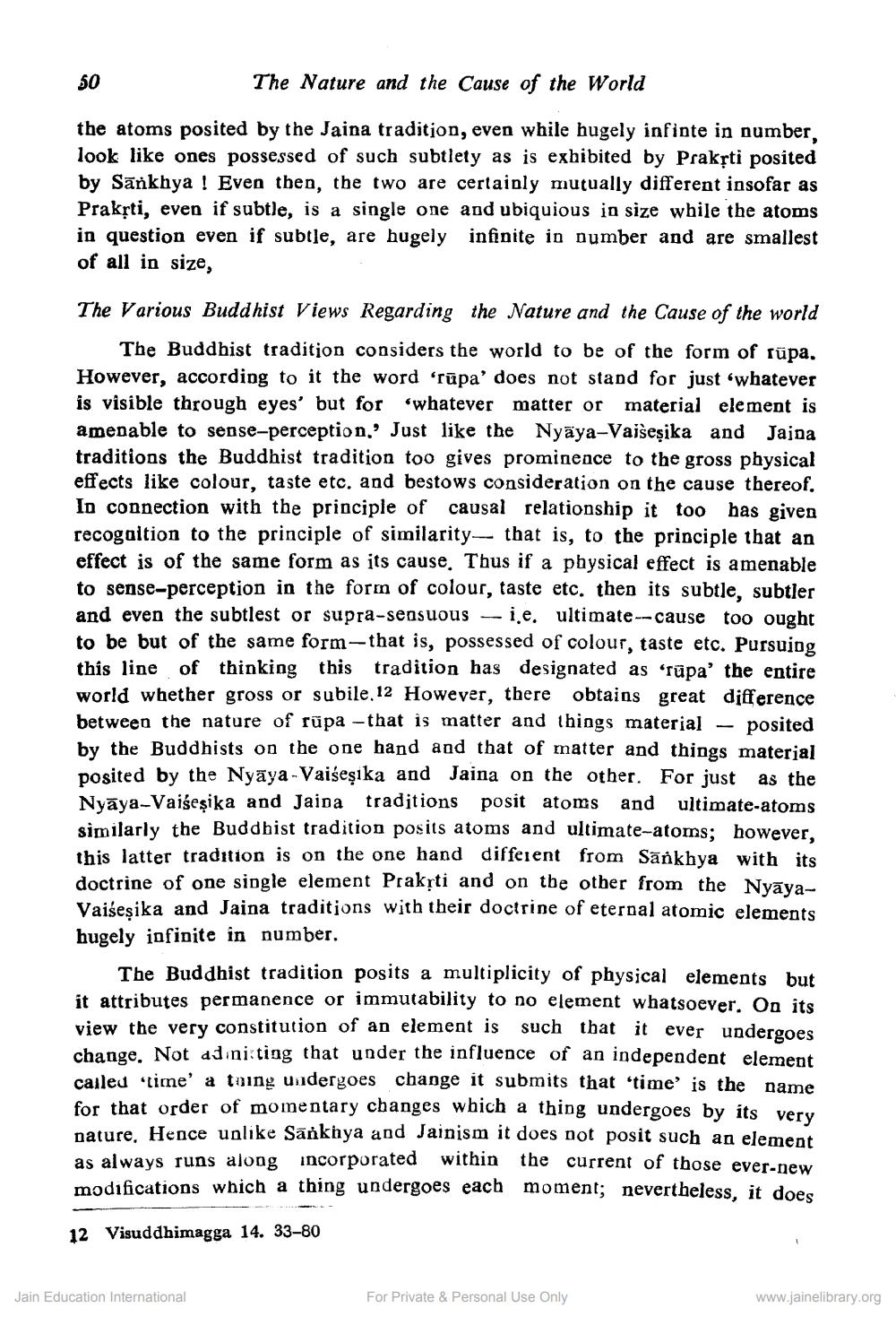________________
50
The Nature and the Cause of the World
the atoms posited by the Jaina tradition, even while hugely infinte in number look like ones possessed of such subtlety as is exhibited by Prakrti posited by Sānkhya ! Even then, the two are certainly mutually different insofar as Prakrti, even if subtle, is a single one and ubiquious in size while the atoms in question even if subtle, are hugely infinite in number and are smallest of all in size, The Various Buddhist Views Regarding the Nature and the Cause of the world
The Buddhist tradition considers the world to be of the form of rūpa. However, according to it the word 'rūpa' does not stand for just whatever is visible through eyes' but for whatever matter or material element is amenable to sense-perception.' Just like the Nyāya-Vaišeșika and Jajna traditions the Buddhist tradition too gives prominence to the gross physical effects like colour, taste etc. and bestows consideration on the cause thereof. In connection with the principle of causal relationship it too has given recogaition to the principle of similarity-- that is, to the principle that an effect is of the same form as its cause. Thus if a physical effect is amenable to sense-perception in the form of colour, taste etc. then its subtle, subtler and even the subtlest or supra-sensuous - i.e. ultimate--cause too ought to be but of the same form--that is, possessed of colour, taste etc. Pursuing this line of thinking this tradition has designated as 'rūpa' the entire world whether gross or subile.12 However, there obtains great difference between the nature of rüpa - that is matter and things material - posited by the Buddhists on the one hand and that of matter and things material posited by the Nyāya - Vaiseșika and Jaina on the other. For just as the Nyāya-Vaišeşika and Jaina traditions posit atoms and ultimate-atoms similarly the Buddbist tradition posits atoms and ultimate-atoms; however, this latter tradition is on the one hand different from Sankhya with its doctrine of one single element Prakṣti and on the other from the NyāvaVaišesika and Jaina traditions with their doctrine of eternal atomic elements hugely infinite in number.
The Buddhist tradition posits a multiplicity of physical elements but it attributes permanence or immutability to no element whatsoever. On its view the very constitution of an element is such that it ever undergoes change. Not adniting that under the influence of an independent element cailed time' a toing undergoes change it submits that time is the name for that order of momentary changes which a thing undergoes by its very nature. Hence unlike Sankhya and Jainism it does not posit such an element as always runs along incorporated within the current of those ever.n modifications which a thing undergoes each moment; nevertheless, it does
12 Visuddhimagga 14. 33-80
Jain Education International
For Private & Personal Use Only
www.jainelibrary.org




